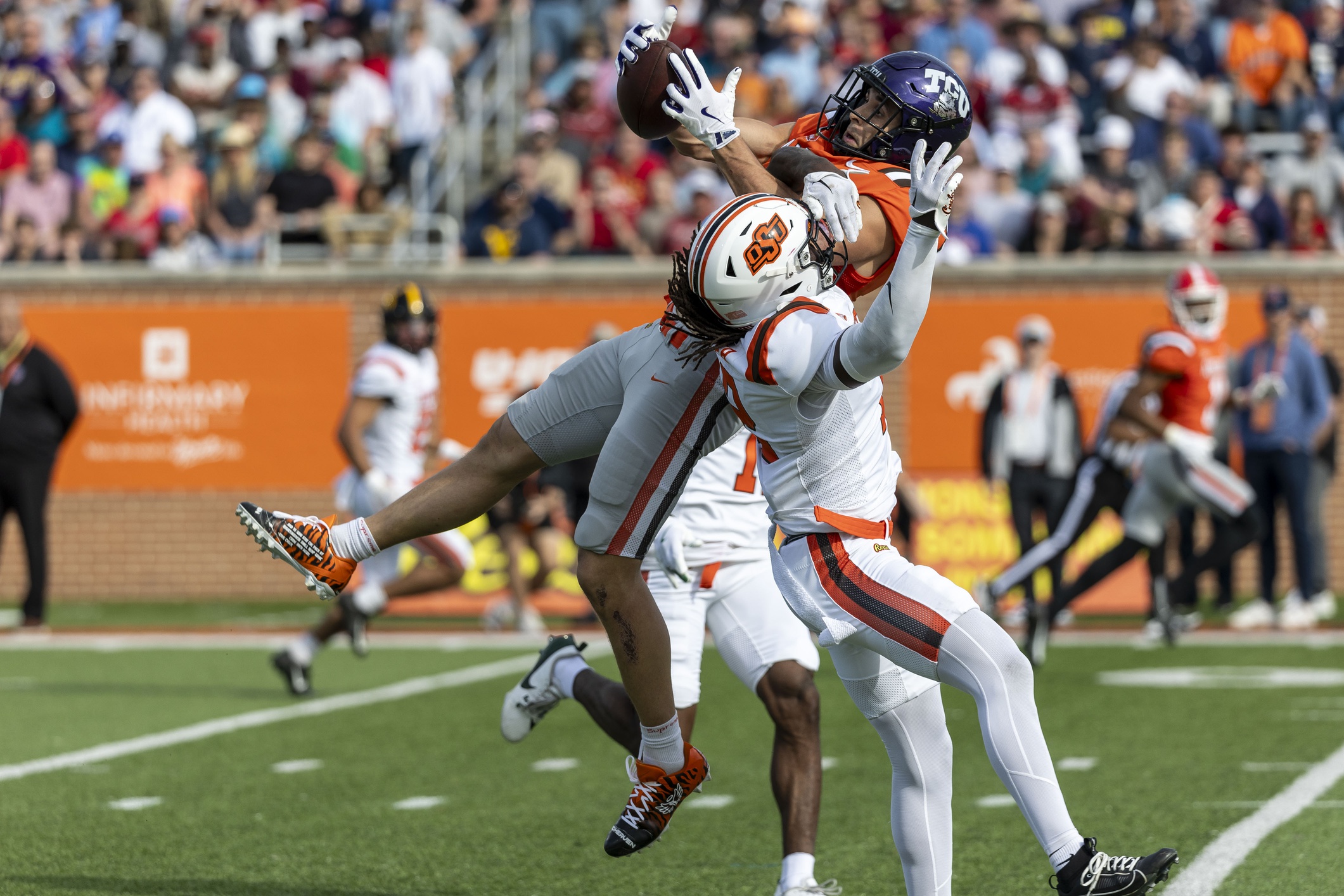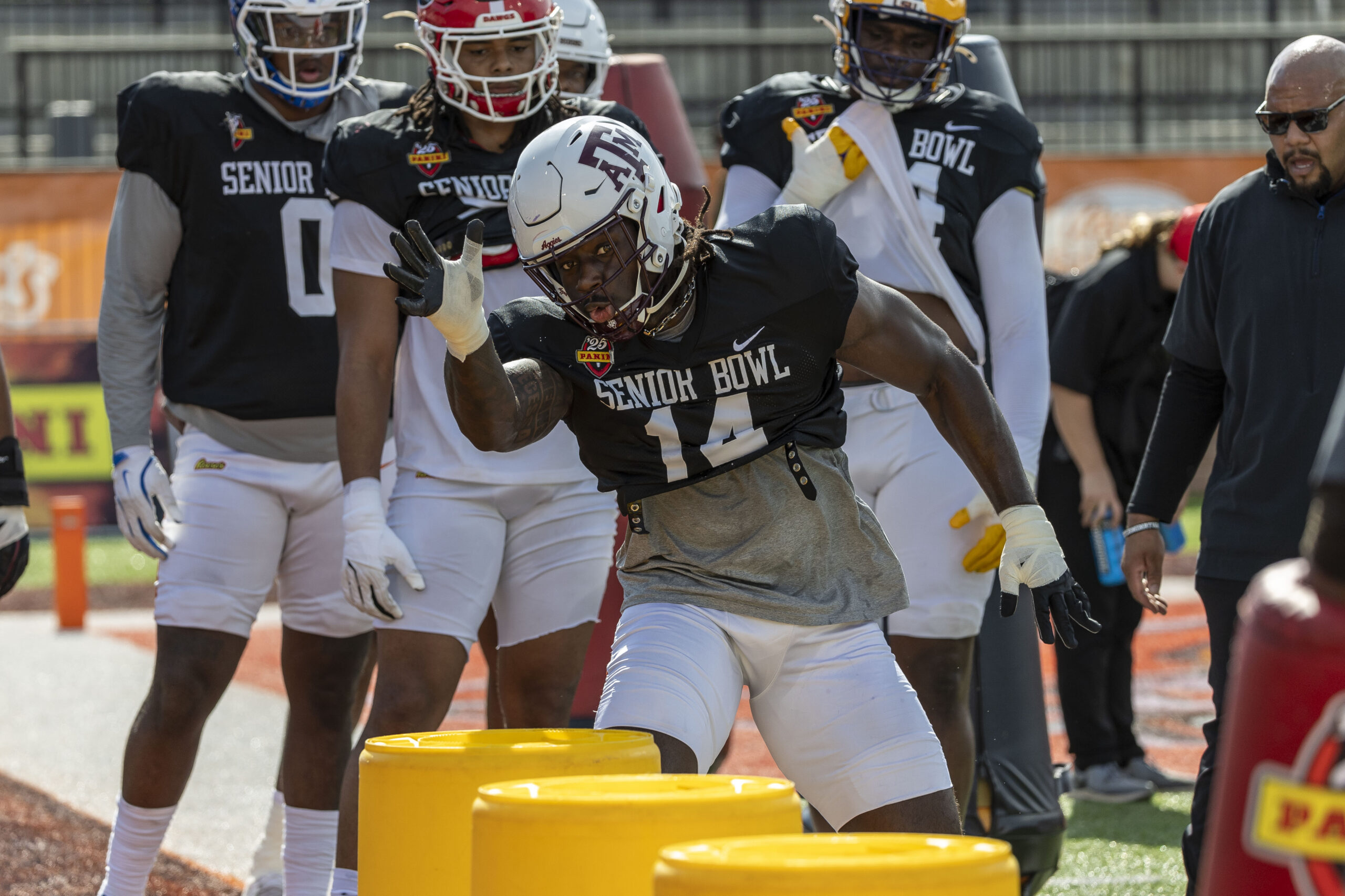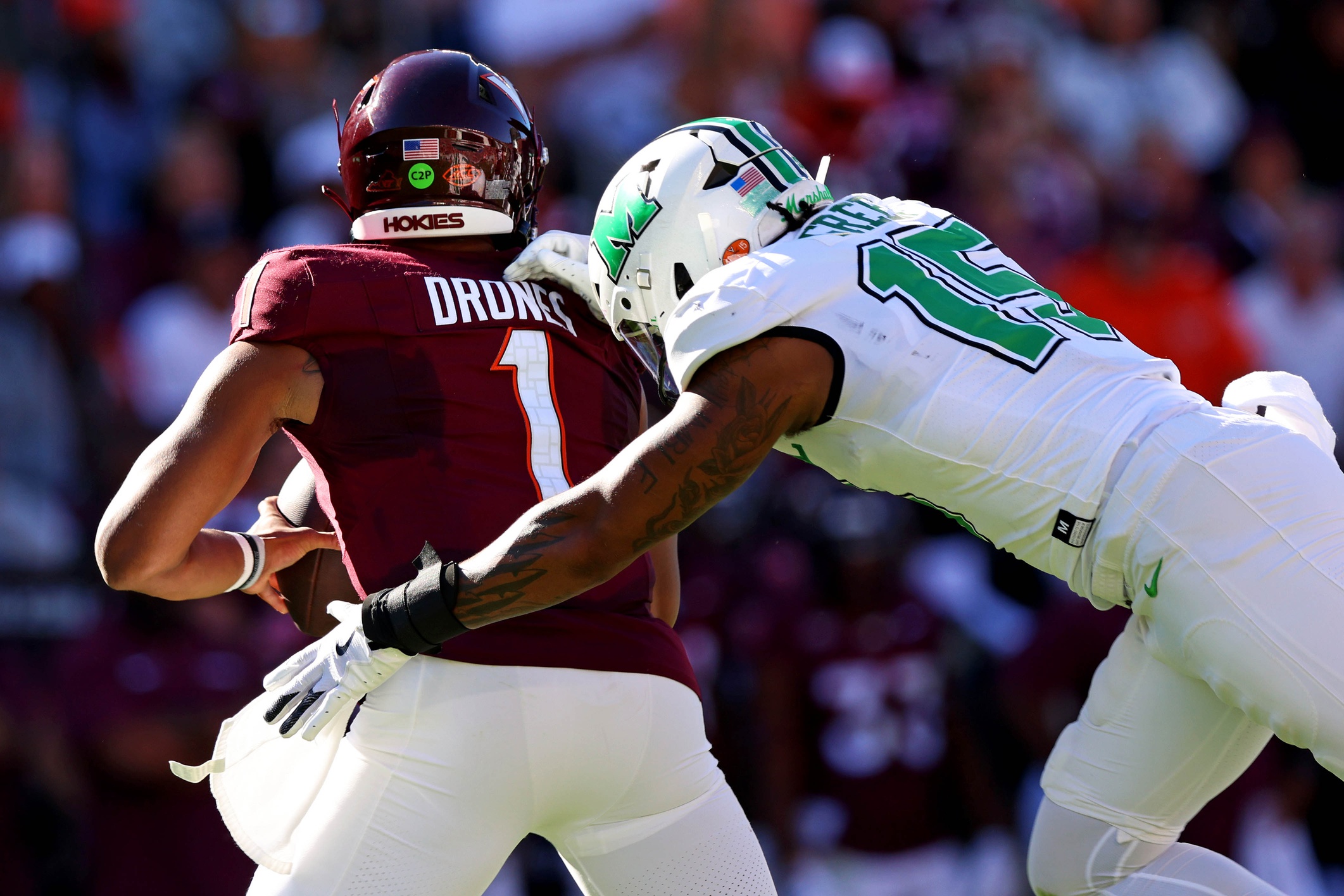NFL Draft
1/23/25
8 min read
2025 NFL Draft: Biggest Questions Heading Into the Senior Bowl

While a draft prospect’s grade is predominantly based on their film from the previous year, the two months leading up to the draft are still important, as teams use all-star games, interviews, pro days, and the combine to round out their evaluations.
Bowl season is the first step in the “draft process” and our first opportunity to add context to what a player puts on tape. With Senior Bowl week approaching, these are six of the biggest questions that will hopefully be answered for 2025 NFL Draft prospects.
Biggest Questions for Senior Bowl Prospects
How Will small-school OL/DL fare vs. better competition?
The most valuable aspect of the Senior Bowl is getting a chance to see how FCS players against better competition. The talent gap between FBS and FCS is significant at every position, but it’s most pronounced in the trenches, and these players have the most potential to move drastically up or down boards based on how they perform.
There are several FCS offensive linemen with Day 2 potential who are essentially unproven as pass blockers. Charles Grant (William & Mary, No. 76 on my board) is a rare athlete with elite measurables and foot speed, but he’s listed at 300 pounds and has never faced anything close to an NFL-caliber bull rush.
— James Foster (@JamesFosterNFL) January 23, 2025
Grey Zabel (North Dakota State, 54) has clean tape at left tackle, but he needs to prove that he can protect the edge against quality speed rushers.
Grey Zabel is the latest product of the North Dakota State OL factory. Approaching Day 2 consideration imo pic.twitter.com/Upn4VAZzTy
— James Foster (@NoFlagsFilm) October 30, 2024
Jackson Slater (Sacramento State, 189), Clay Webb (Jacksonville State, 224), and Carson Vinson (Alabama A&M/238) also have an opportunity to prove themselves, although I wasn’t as impressed by their tape.
On the other side of the ball, edge rusher David Walker (Central Arkansas, 49) has a chance to establish himself as a Day 2 pick. Walker has had three consecutive dominant seasons and was named FCS Defensive Player of the Year in 2024. His tape is barely even competitive, and he wins almost every pass-rushing rep.
Central Arkansas edge David Walker has some of the most dominant football tape I've ever seen. Just playing on sandbox mode out there (I do not endorse the purple field) pic.twitter.com/ftGNyiWSxa
— James Foster (@NoFlagsFilm) November 11, 2024
Darius Alexander (Toledo, 92) and Mike Green (Marshall, 14) played in the Group of Five, so the jump in competition level won’t be quite as steep, but good performances in the 1-on-1s would be helpful to verify what they’ve shown on tape.
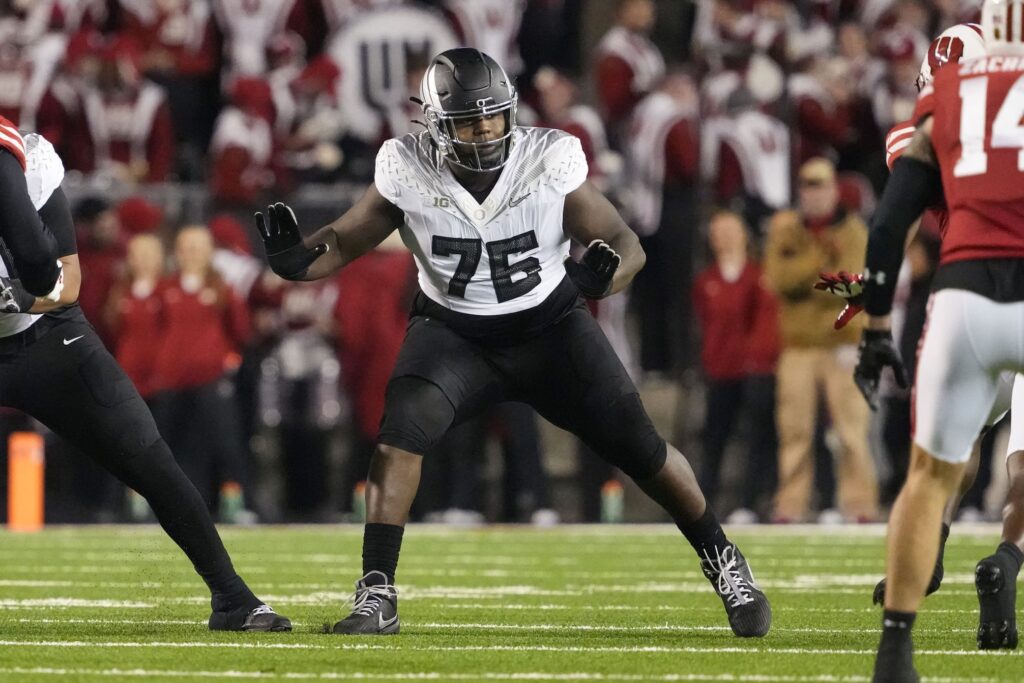
How many of these college tackles are NFL tackles?
The 2025 class has an unusually high number of prospects who played tackle in college but might need to move inside in the NFL.
Many of those players will be competing in Mobile, and their usage and alignment will answer a lot of questions. This is how I view the Senior Bowl tackles right now in terms of their future position in the NFL:
Pure tackle
Josh Conerly Jr. - Oregon (16)
Ozzy Trapilo - Boston College (85)
Chase Lundt - Connecticut (101)
Can play tackle but might be better at guard
Armand Membou - Missouri (7)
Logan Brown - Kansas (93)
Anthony Belton - NC State (95)
Jalen Travis - Iowa State (146)
Most likely a guard but would give him a chance at tackle
Jonah Savaiinaea - Arizona (60)
Jalen Rivers - Miami (114)
Emery Jones Jr. - LSU (120)
Guard
Wyatt Milum - West Virginia (36)
Grey Zabel - North Dakota State (54)
Caleb Rogers - Texas Tech (157)
Ajani Cornelius - Oregon (173)
Center
Marcus Mbow - Purdue (80)
Can any FCS/Group of Five DBs boost their stock?
There isn’t a Quinyon Mitchell in this year’s defensive back group, but there are a few intriguing players from lower-level conferences who could emerge as third or fourth-round picks with strong performances.
Bilhal Kone (Western Michigan, 144) is a long and fluid corner who excels in zone but has some issues mirroring quick horizontal breaks in man coverage. He’s the only true outside corner from the FCS/G5 level, and simply being competitive in the 1-on-1s would be a win.
— James Foster (@JamesFosterNFL) December 13, 2024
Caleb Ransaw (Tulane, 209) and Upton Stout (Western Kentucky, 224) are nickels who could end up moving to safety at the next level. I was a huge fan of Ransaw’s 2023 tape, but he had a quiet year.
It’s more difficult for safeties to stand out at the Senior Bowl, but Rayuan Lane III (Navy, 180), Maxen Hook (Toledo, 217), and Keondre Jackson (Illinois State, 205) could help themselves in team drills.
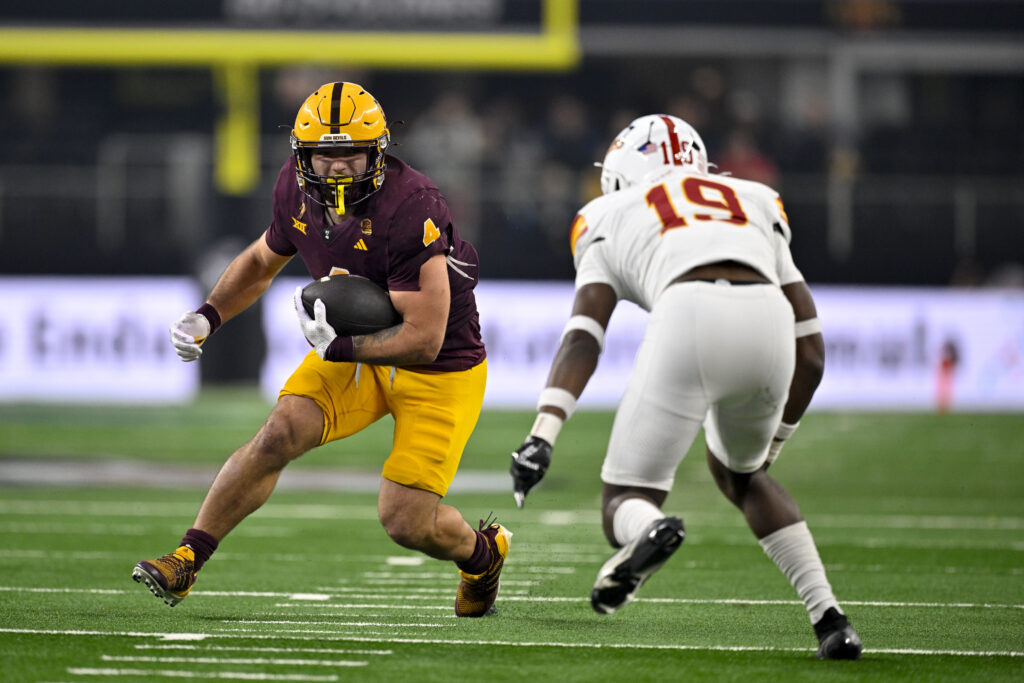
Which third down back has the best showing?
This year’s running back class is very deep in terms of overall talent, but there’s also a lot of depth within each archetype. I can’t remember a class with so many receiving specialists, and almost all of them will be in Mobile.
LeQuint Allen (Syracuse, 97) is a true junior and has the most complete third down skill set of the group. In 2024, he had 529 receiving yards and ran more routes from the slot than any back in the Power 4. He’s also one of the best pass blockers in this running back class.
LeQuint Allen is a really dynamic receiving back. Should dominate 1-on-1s at the Senior Bowl pic.twitter.com/HGROAx54jf
— James Foster (@NoFlagsFilm) January 15, 2025
Brashard Smith (SMU, 133) is following the Tyrone Tracy Jr. career path and could end up as a Day 2 pick. He started his career as a receiver at Miami, but after three seasons of modest production, he transferred to SMU and switched to running back. In his first season at a new position, he had the ninth most scrimmage yards (1659) in the FBS.
— James Foster (@JamesFosterNFL) December 11, 2024
Woody Marks (USC, 177) doesn’t have anything left to prove as a receiver, with 257 receptions and 1,504 yards across five seasons, but he has major issues in pass protection that could prevent him from seeing the field in the NFL.
Marcus Yarns (Delaware, 226) is another receiving back with pass-blocking concerns to keep an eye on, but at 185 pounds, he’ll most likely be off of a lot of boards.
I wouldn’t necessarily label Cam Skattebo (Arizona State, 98) as a “third down back,” but he did rank third among FBS running backs with 543 receiving yards, so he deserves mention here.
Have developmental pass rushers made progress?
The majority of every prospect’s evaluation is based on games played four to seven months before the draft, but training and development are a year-round process that ramps up once the season ends. I’m interested to see if unpolished developmental pass rushers like Shemar Stewart (Texas A&M, 21) and Oluwafemi Oladejo (UCLA, 116) have cleaned up their hand placement or added a new move since we last saw them.
Stewart might be the best athlete in this class, regardless of position, but his lack of timing and hand usage made him an ineffective pass rusher in the SEC. If Stewart shows up on the first day and dominates in the 1-on-1 drills, his agent might advise him to take the rest of the week off and start looking for houses in Cleveland.
— James Foster (@JamesFosterNFL) January 23, 2025
Oladejo is the player I could most realistically see taking massive strides after just one month of training. He was an off-ball linebacker until Week 4 of the 2024 season, and his pass-rushing skill set is still in the early stages of development.
He was only comfortable winning with a cross-chop this year, but if he shows an expanded pass-rushing arsenal in Mobile, I’d expect him to rise up teams’ boards.
— James Foster (@JamesFosterNFL) January 14, 2025
Players like Walter Nolen (Ole Miss, 29), Jordan Burch (Oregon, 83), and Joshua Farmer (Florida State, 168) aren’t complete projects but could boost their stock if they show significant development.
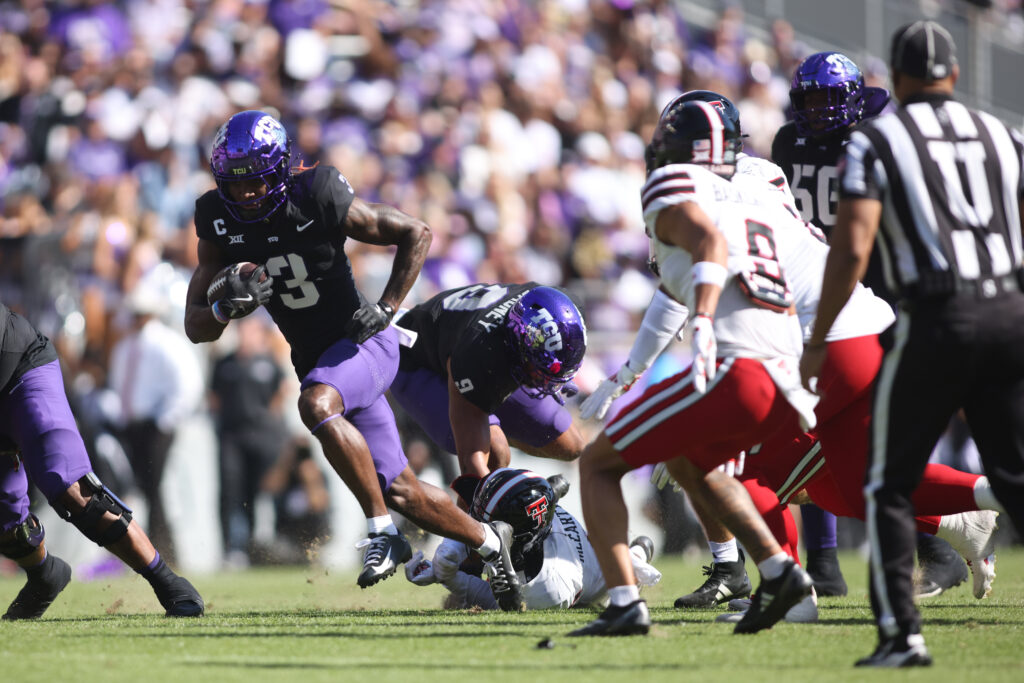
Who Is This Year's Social Media WR?
Aside from “[QB] makes a spectacular throw on air in his pro-day workout,” “[WR] dominates 1-on-1s at the Senior Bowl” is the annual draft spectacle with the largest gap between media coverage and relevancy to that player’s evaluation.
A receiver with a two-way go separating on a triple move that takes nine seconds to develop isn’t surprising or translatable to the NFL. The only winners and losers from these 1-on-1s are cornerbacks who perform well and receivers who can’t get open.
Now that I’ve established my disdain for these drills, I can admit they are very fun to watch. Even though I wouldn’t boost a receiver’s grade for succeeding in such a favorable situation, I do enjoy watching shifty route runners play in sandbox mode.
These are the players on this year’s roster who I would be counting my place in line to avoid getting matched up with:
WR Savion Williams - TCU (35)
WR Tez Johnson - Oregon (88)
WR Tai Felton - Maryland (102)
WR Xavier Restrepo - Miami (105)
WR Arian Smith - Georgia (210)
HB LeQuint Allen - Syracuse (139)
TE Elijah Arroyo - Miami (58)
Make sure to check out our new home for all of our NFL Draft content.




